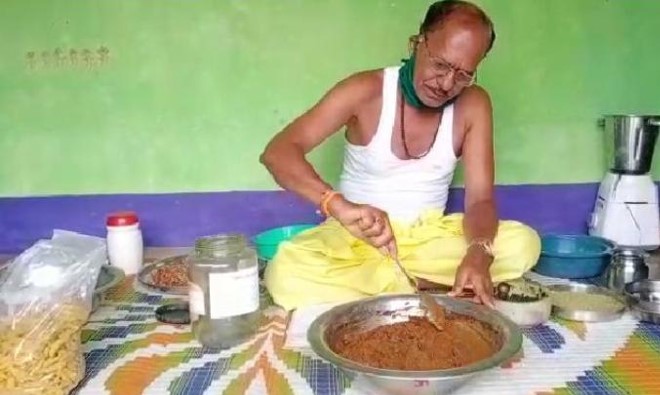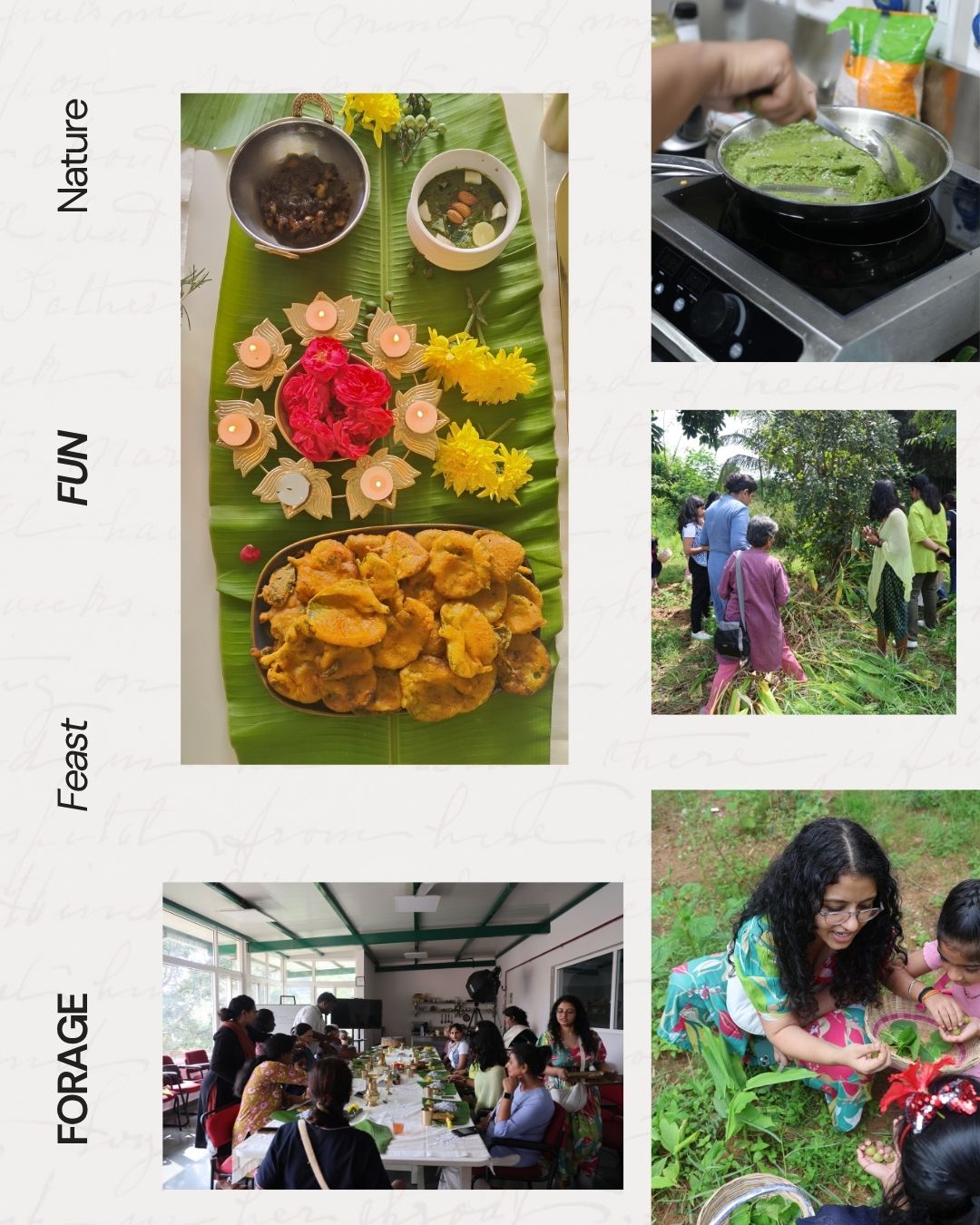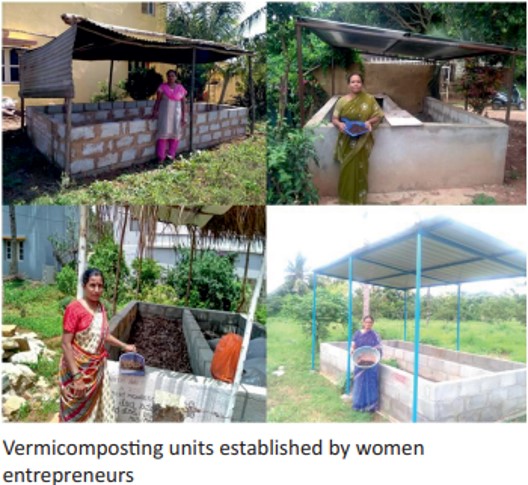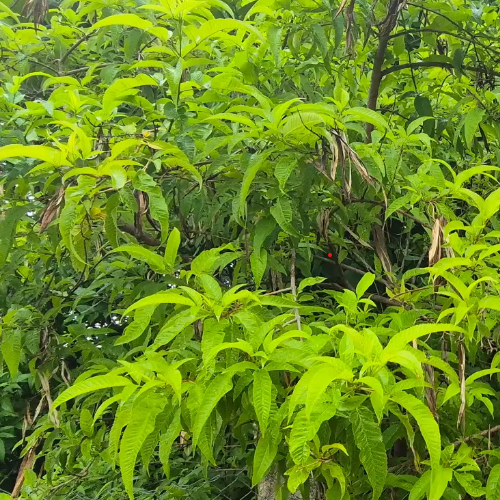Pippali - An Ingredient as Food and Medicine
Are you someone who is unable to tolerate chillies ? Read on to know about Pippali, a wonderful alternative to chilly with much more health benefits and some delicious traditional recipes with it for you to make Pippali a part of your diet

Author - Sonia Velarsan, RD
Are you one of those people who are unable to tolerate mirch/ chillies in your food? You’re not alone. Some of us, despite growing up in India, experience discomfort even with the mildest dose of katu rasa (pungent taste) substances. However, when we suffer from indigestion, gas-related issues, heartburn, or loss of appetite, a katu rasa ingredient called Pippali, or long pepper is indicated. Whether brewed into a healing decoction, used as a digestive churan, or added to a simple soup, this Ayurvedic spice is known to alleviate many digestive problems.
Long pepper is known by various names across different languages. (FRLHT's ENVIS Centre on Medicinal Plants)
- Assamese: Pipli, Pipoli
- English: Indian long pepper, Long pepper
- Gujarati: Pipari
- Hindi: Pipli
- Kannada: Kandan Lippili
- Karbi: Bithipokang
- Konkani: Pipli
- Malayalam: Chapala, Cheenathippali, Kattuthippali, Maghadi, Pippali, Tippali
- Marathi: Pimpli
- Sanskrit: Pippali
- Tamil: Tippili
- Telugu: Pippallu
- Urdu: Pipul
Photo courtesy: Sonia, TDU, Bengaluru

Although pippali belongs to the pepper family, its binomial name is Piper longum, it looks quite different from the small, round black pepper we are accustomed to. Its slender, long-form, combined with fruity notes and remarkable healing properties, make pippali a distinctive spice. (1) Just a dash can elevate a dish. Once an integral part of the Indian spice box, it got lost along the way due to a lack of widespread availability and increased access to chilli powder. However, as the pandemic has fueled a desire to boost immunity and respiratory health, this ancient spice is making a comeback in both restaurant and home kitchens.

Rasapanchaka
According to Bhojana Kutuhalam, long pepper in its wet state aggravates kapha dosha, is sweet and cold in nature, heavy for digestion, and unctuous. In its dry state, it possesses the opposite qualities. It is an aphrodisiac, has a pungent taste, and is sweet in its post-metabolic state. It is greatly useful in disorders caused by vitiated vata and kapha dosha, cough, and dyspnea.
History
Long pepper has a rich history. In his seminal book, Indian Food: A Historical Companion, K. T. Achaya lists it as one of the earliest spices ever recorded in India, alongside mustard (baja), a sour citrus (jambira), and turmeric (hardira). Pippali was exported from the southern parts of India nearly 4,000 years ago and was used to add heat to food before chilies made an appearance in the subcontinent. "Sushruta describes seven types of cooked meats," writes Achaya, of which the vesavara, or the meat stuffing, "could either be spiced with long pepper (pippali), round pepper (maricha), and ginger, or sweetened with guda and ghee." (2)
Culinary delight:
Some use pippali in pepper fish, replacing black pepper with long pepper. A few chefs suggest using it in marinades for meats as well. I’ve seen recipes where they infuse gin with mango and pippali and use it in a curried pumpkin and coconut dip. Some of the recipes I explored are given below.
- Pippali Tea: Steep 1/2 tsp pippali powder in hot water for 5 minutes then strain and sweeten with honey if desired
- Long Pepper Chicken: Marinate chicken with yogurt, pippali powder, and spices. Then cook in a pan until tender. Recipe here.
- Kandathippili Rasam: Boil tamarind water with tomatoes, spices, and 1/2 tsp pippali powder, then add tempered mustard seeds and curry leaves. Recipe here.
- Pippali in Soups: Add 1/2 tsp pippali powder to your favorite vegetable or chicken soup during cooking. This infuses added flavor and benefits.
- Pippali and Date Ladoo: Mix chopped dates. Pippali powder, nuts, grated coconut etc. Shape into ladoos. Cool before serving Recipe here.
Nutritional information:
Nutritional Values per 100 grams of Pippali (3)
Macronutrients:
- Calories: 251 kcal
- Carbohydrates: 63.95 g
- Dietary Fiber: 26.2 g
- Sugars: 0 g
- Protein: 4.4 g
- Fat: 3.26 g
- Saturated Fat: 0.93 g
- Monounsaturated Fat: 0.99 g
- Polyunsaturated Fat: 1.06 g
Vitamins and Minerals:
- Vitamin C: 11 mg
- Vitamin A: 0 IU
- Calcium: 446 mg
- Iron: 13.99 mg
- Magnesium: 171 mg
- Phosphorus: 198 mg
- Potassium: 1259 mg
- Sodium: 20 mg
- Zinc: 1.42 mg
Medicine
The Pipalimool plant has been used in the Ayurvedic medicinal system to treat various diseases and disorders. As per ancient scriptures, P. longum is used as a bio-enhancer that helps in removing endotoxins from the body. (4, 6) It helps in balancing vitiated Kapha and Vata. It has been used in India since ancient times and is considered one of the significant herbs in Ayurveda, mentioned in texts like Panchkola and Shadushana.
Pippali is used as a significant drug to treat anaha (constipation) and agnimandya (digestive impairment). Charaka, in the Charaka Samhita, mentions its use in these conditions. The plant is mainly used to cure respiratory disorders. (5)
The typical dosage of pippali is 1 gram administered along with a teaspoon of honey and a cup of water once or twice a day soon after food. This treats obesity, high cholesterol fatty liver disorder, and weak digestion strength. For home remedies for bloating and fullness of the abdomen, an intake of boiled barley with half a teaspoon long pepper and a teaspoon of ghee is useful. (6)
Caution for Long-Term Use
However, Charaka also cautioned against the excessive use of pippali for dietary purposes, though not for medicinal use. This plant is included in Virechana dravya (purgative substances). Charaka advised that pippali should not be used in excess, continuously for a long period due to its Pitta-increasing property, which can cause excess heat in the body.(7,8) For a short period of a few weeks up to a couple of months, based on the disease, long pepper can be used.
Therefore pippali is a potent spice and medicine. However, it should be used judiciously.
Next up in our #FoodAndMedicine series is Kapittha also called Wood Apple (Feronia limonia). Stay tuned!
Join "Introduction to Ayurveda Dietetics." This course will introduce you to the specialized vocabulary related to food in Ayurveda. It serves as a primer to initiate your journey into this medical science of "Ayu," or life!
Introduction to Ayurveda Dietetics
References
- Singh, Sadhana, et al. "Pharmacognostical and phytochemical analysis of Pippali (Piper longum Linn.)." Pharma Innov. J 7 (2018): 286-289.
- Achaya, Kongandra Thammu. "Indian food: a historical companion." (1994).
- Singh, Sadhana, et al. "Pharmacognostical and phytochemical analysis of Pippali (Piper longum Linn.)." Pharma Innov. J 7 (2018): 286-289.
- Sushruta Samhita, Sutra Sthana
- Vaidya BG, Adarsh N. Chaukhambha Bharati Academy. Varanasi, Vasadi Varga, 2005; 229.
- Charaka Samhita, Chikitsa Sthana
- Charaka Vimana Sthana 1/16
- Vaidya, Bapalal G., and Nighantu Adarsh. "Chaukhambha bharati academy." Varanasi, Vasadi Varga, Page-229 (2007).

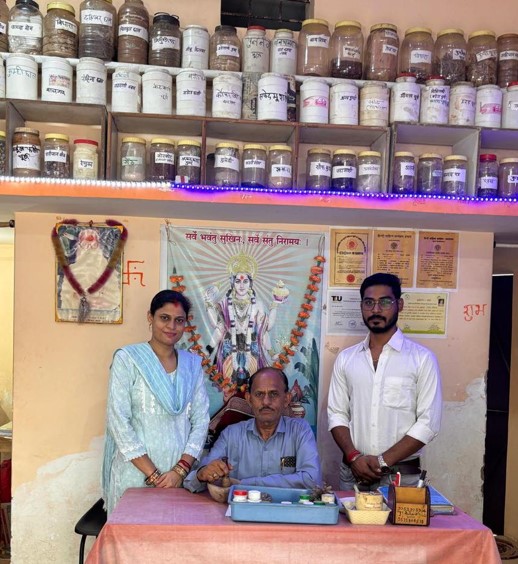
.png)
.jpeg)
